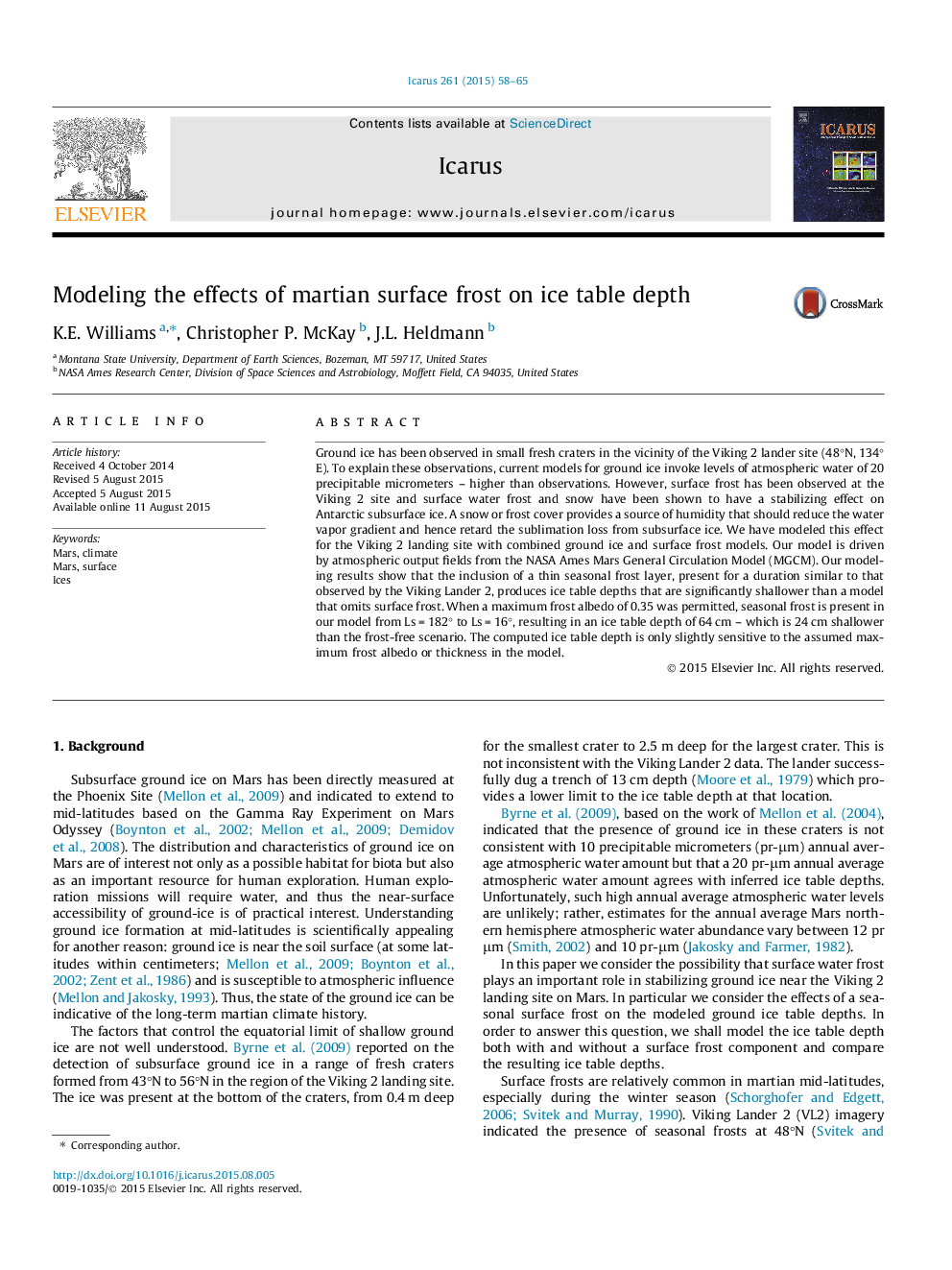| Article ID | Journal | Published Year | Pages | File Type |
|---|---|---|---|---|
| 8135958 | Icarus | 2015 | 8 Pages |
Abstract
Ground ice has been observed in small fresh craters in the vicinity of the Viking 2 lander site (48°N, 134°E). To explain these observations, current models for ground ice invoke levels of atmospheric water of 20 precipitable micrometers - higher than observations. However, surface frost has been observed at the Viking 2 site and surface water frost and snow have been shown to have a stabilizing effect on Antarctic subsurface ice. A snow or frost cover provides a source of humidity that should reduce the water vapor gradient and hence retard the sublimation loss from subsurface ice. We have modeled this effect for the Viking 2 landing site with combined ground ice and surface frost models. Our model is driven by atmospheric output fields from the NASA Ames Mars General Circulation Model (MGCM). Our modeling results show that the inclusion of a thin seasonal frost layer, present for a duration similar to that observed by the Viking Lander 2, produces ice table depths that are significantly shallower than a model that omits surface frost. When a maximum frost albedo of 0.35 was permitted, seasonal frost is present in our model from Ls = 182° to Ls = 16°, resulting in an ice table depth of 64 cm - which is 24 cm shallower than the frost-free scenario. The computed ice table depth is only slightly sensitive to the assumed maximum frost albedo or thickness in the model.
Keywords
Related Topics
Physical Sciences and Engineering
Earth and Planetary Sciences
Space and Planetary Science
Authors
K.E. Williams, Christopher P. McKay, J.L. Heldmann,
